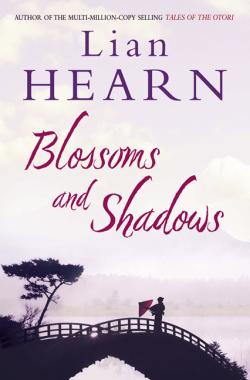Blossoms and Shadows

By Lian Hearn, Quercus Publishing, 2011, 400 pages, ISBN 978-0-85738-297-9, £12.99
Review by Ali Muskett
Blossoms and Shadows by Lian Hearn (real name Gillian Rubinstein), is set in 19th century Japan, and is narrated by fictional character Tsuru. The daughter of a doctor, Tsuru is raised in a world of medicine where, due to cultural restraints of the time, she is allowed only a glimpse of the life she desires. Working alongside her father, Tsuru helps to mix medicines and stitch up wounds. She dreams of one day sewing up sword wounds on the battleground, but observes that no warrior would want to be “stitched up by a girl.”At the end of the day, she knows she is just a woman, and can never be accepted as a doctor in this man’s world. Women are expected to marry and have children, not develop an intense curiosity about the inner workings of the human body, and a longing to “cut them open”. But life alongside her father has nurtured a dream in Tsuru’s mind; a dream that some day women and men will work side by side.
Marriage to a doctor whom she loves ought to provide a way into the world Tsuru imagines, but only leads to more frustration. Tsuru’s passion and persistence cause her life to take an unexpected turn, treading the fine line between sanity and madness, tradition and the rise of modern Japan. Playing a game of forbidden love and deception, Tsuru tastes the world of men, but it is not a world she can remain a part of. While slightly slow to start, it is this twist in Tsuru’s tale that brings Blossoms and Shadows to its peak. Florence Nightingale is mentioned, and there is hope that Tsuru may take on the task of “reforming the nurses,” but this comes to nothing and, after the excitement and intrigue of the middle of the book, the story simply peters out to a rather disappointing end.
The time immediately before the Meiji Restoration of 1868 was a turbulent time for Japan, featuring wars and political unrest. Setting a novel in this period is no mean feat, but Hearn clearly seems to have done her research. About half of the main characters in the book are fictional, the other half historical, but that doesn’t make the story any less feasible. Reading Blossoms and Shadows is like zooming in on a thick, dusty history book and finding a story that one can actually relate to. The great figures, like Sakamoto Ryoma, are well known and much documented. But Hearn gives the story of the “opening” of Japan a more personal touch by trying to focus the tale on one family. Although fictional, this human story of love and war is quite plausible.
Tsuru’s story is interspersed with occasional chapters from the points of view of historical figures such as Shinsaku Takasugi (高杉 晋作– an activist and military reformer), Botoni Nomura (a loyalist poet and nun), Seiichiro Shiraishi (a wealthy merchant and supporter of Choshu activists) and Shoin Yoshida (吉田 松陰– a teacher and reformer), but the necessity of these chapters is questionable given the strength of the fictional characters’ stories. In fact, closing the book with such chapters detracts from what could be a really touching piece of historical fiction.
Hearn admits herself that “The idea of writing a novel set in this time seemed utterly beyond me.” (http://www.lianhearn.com/lianhearn_htmlsite/on_blossoms.html) and when reading Blossoms and Shadows it’s hard to imagine how she ever kept track of all the characters (as a reader, it’s a challenge, but there is a handy list in the front of the book). It would be impossible to write a novel set in such a time and not allude to historical figures, but perhaps it wasn’t necessary to include quite so many characters in this already ambitious novel. The reader could get bogged down with trying to remember who’s who, and in the end not really enjoy the story itself. Tsuru’s struggles, both personal and professional, are enough of a hook to make this a page turner, without adding the weighty confusion of all of those additional historical figures.
To the average reader, this novel may feel a bit too heavy, bursting at the seams with historical details, long names of Japanese people (including many name changes along the way), and unexplained Japanese vocabulary (a glossary might have been a good idea). However, for someone with an interest in Japanese culture, it ought to be quite pleasurable reading. Blossoms and Shadows is a slow-burner though, and requires some persistence, commitment and serious interest in Japan to make it to the end of this hefty tome.
It’s worth adding that, if you approach Blossoms and Shadows expecting it to be similar to Lian Hearn’s other books, you might find yourself more than a little bit disappointed. Blossoms and Shadows has a very different tone compared to that of Hearn’s popular historical fantasy series, Tales of the Otori. However, Hearn’s ability to transport the reader to a world where trees chirp with the sound of cicadas and geisha entertain behind the paper-thin walls of tea houses has not been lost. Her writing, at times slightly weaker than in previous novels, is engaging for the most part. Blossoms and Shadows, probably best described as literary historical fiction, tries to be a story of romance, war and revolution. This is a little too much for one novel, and Hearn might have considered splitting the story into another series, or perhaps scaling the story right down to focus much more on just the fictional characters.
Blossoms and Shadows is not a bad piece of fiction at all, but it sadly did not live up to Hearn’s other novels.

